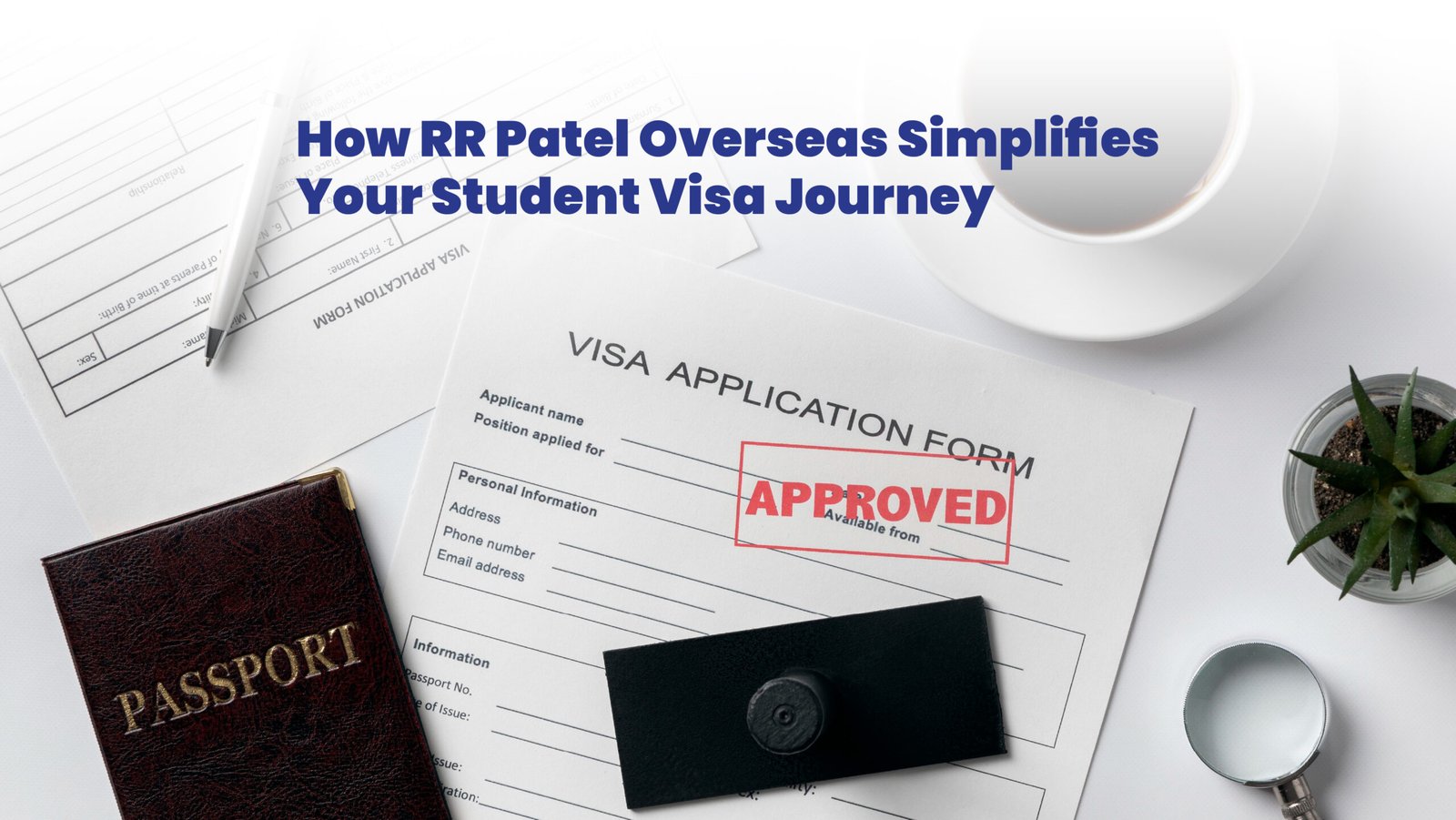
Starting Your Visitor Visa Application the Right Way
I’ve always believed that travel is more than just moving from one place to another, it’s about experiences, opportunities, and connections. Maybe you’re like me, dreaming of exploring a new country, attending an important business meeting abroad, or finally visiting family you haven’t seen in years.
But if you’ve ever thought about applying for a visitor visa, you probably know it can feel overwhelming. The paperwork, the requirements, and the fear of rejection because of a small mistake, it’s stressful. I get it.
That’s exactly why I’ve put together this guide. In this blog, you’ll discover:
- What a visitor visa is and why it’s important
- The different types of visitor visas available (tourist, business, family, and more)
- The step-by-step application process
- Common mistakes to avoid and tips for success
By the end, you’ll have a clear picture of how to approach your application with confidence and make your travel plans a reality.
What is a Visitor Visa?
Think of a visitor visa as your short-term pass to another country. It’s what lets you travel abroad for a specific purpose, whether that’s sightseeing, meeting loved ones, or attending a business event. The stay is temporary, usually lasting anywhere from a few days to a few months, depending on the country and visa type.
- Short-term visitor visas are the most common. These are perfect if you’re planning a holiday, a quick family visit, or a short business trip.
- Long-term visitor visas (offered in certain countries) allow you to stay longer, often when you’re visiting family for an extended period.
In simple terms, if your goal is to travel, connect, or explore without settling permanently, a visitor visa is the key that opens that door.
Types of Visitor Visas
Not all visitor visas are the same, the type you apply for depends on why you’re traveling. Here are the most common ones:
- Tourist Visa – Perfect if you want to explore a new country, go on vacation, or simply enjoy cultural experiences and sightseeing.
- Business Visa – Designed for professionals who need to attend meetings, conferences, training programs, or exhibitions abroad.
- Family/Relative Visa – If you have loved ones living overseas, this visa makes it possible to spend quality time with them.
- Transit Visa – Needed when you’re passing through a country on the way to your final destination and have a layover beyond the permitted time.
Each type serves a specific purpose, so choosing the right one ensures your application is smooth and hassle-free.
Eligibility Criteria & Basic Requirements
Before you even start filling out forms, it’s important to know if you meet the basic requirements for a visitor visa. While the exact rules differ from country to country, most applications will ask you for:
- A valid passport with enough blank pages and validity for the duration of your trip.
- Proof of financial stability, usually bank statements or salary slips to show you can fund your stay.
- A confirmed travel plan with flight bookings and a clear itinerary.
- Accommodation details, whether it’s hotel reservations or an invitation from your host abroad.
- Proof of ties to your home country, such as a job, property ownership, or dependent family members, this reassures authorities that you’ll return after your visit.
- An invitation letter (when visiting family or traveling for business).
Having these ready in advance makes the process much smoother and reduces your chances of delays.
Application Process (Step-by-Step)
Applying for a visitor visa can feel like a checklist, and that’s exactly how you should approach it. Here’s the typical flow:
- Fill out the visa application form, either online or on paper, depending on the country.
- Gather all supporting documents as per the requirements.
- Pay the visa fee through the approved channel.
- Book your appointment for biometrics or an interview, if the destination country requires it.
- Submit your application at the embassy, consulate, or authorized visa centre.
- Wait for processing and keep track of updates until you receive the decision.
Pro tip: Keeping copies of everything you submit helps you stay organized and prepared in case of queries.
Common Reasons for Visa Rejection
Visa rejections are more common than many people realize, and often for avoidable reasons. Here are the most frequent ones:
- Not showing enough financial proof to cover your trip.
- Incomplete or incorrect documents, like missing signatures or expired papers.
- Weak or inconsistent travel history, which may raise doubts about your intent.
- Misrepresentation of details, even small errors can be treated as red flags.
- Previous visa violations such as overstaying or breaking travel rules.
Knowing these pitfalls ahead of time can help you prepare a stronger application and improve your chances of approval.
Tips for a Successful Visa Application
When it comes to visa applications, even the smallest details matter. Here are a few ways to make sure your application stands out for the right reasons:
- Double-check your documents — one missing page or signature can delay or even derail your application.
- Apply well in advance to avoid last-minute stress, especially during peak travel seasons.
- Maintain a solid financial record by keeping several months of bank statements ready, this reassures authorities that you can afford your trip.
- Prepare a clear travel plan with return flights and accommodation booked, showing you intend to come back home.
- Prove your ties to home with employment letters, property documents, or family responsibilities — this is one of the strongest ways to gain approval.
After Visa Approval: Travel Checklist
Getting your visa approved is a huge relief, but your preparation doesn’t stop there. Before you pack your bags, make sure you tick these off your checklist:
- Check your visa validity and duration so you know exactly how long you can stay.
- Book your flights and accommodation early for better options and prices.
- Purchase travel and medical insurance — it’s not just a formality; it’s peace of mind.
- Keep all essential documents handy — passport, visa, financial proof, and any invitation letters. You’ll need them not just for your trip, but often at immigration checkpoints too.
A little preparation after approval goes a long way in ensuring your journey is smooth and stress-free.
Wrapping Up: Your Visa Journey Made Simple
Applying for a visitor visa can feel overwhelming, but it doesn’t have to be. When you prepare carefully and know what to expect, the process becomes much simpler. And if you’d rather not worry about missing a detail, that’s where we come in.
At RR Patel Overseas, we guide you through every step, from putting your documents in order to submitting your application, so you can focus on what really matters: your upcoming trip.
Ready to start your journey? Reach out to RR Patel Overseas today and let’s make your travel, business, or family visit a reality.
FAQs
Q1. What if I don’t have a strong travel history, will my visa be rejected?
Not necessarily. While previous travel can help, a clear itinerary, strong home ties, and proper financial proof can still get you approved. Our team helps highlight your strengths in the application.
Q2. I’m worried about making mistakes in the paperwork. Can you help?
Yes! This is one of the most common reasons for rejection. At RR Patel Overseas, we review every document carefully to ensure nothing is missing or incorrect.
Q3. How can I prove I’ll return to my home country after my visit?
Showing ties such as a stable job, property ownership, or dependent family is key. We guide you in preparing these proofs convincingly.
Q4. What if my visa gets rejected, do I lose my chance?
Not at all. You can reapply, but you must address the reasons for rejection. We specialize in strengthening reapplications so your chances improve.
Q5. Is it possible to speed up the visa process?
While embassies have fixed timelines, applying early, submitting the right documents, and avoiding mistakes saves you weeks of back-and-forth delays.
Q6. I’m confused about which visa I should apply for, can you guide me?
Absolutely. Choosing the wrong visa category is a common mistake. We’ll assess your travel purpose and recommend the right type (tourist, family, or business) to avoid rejection.


